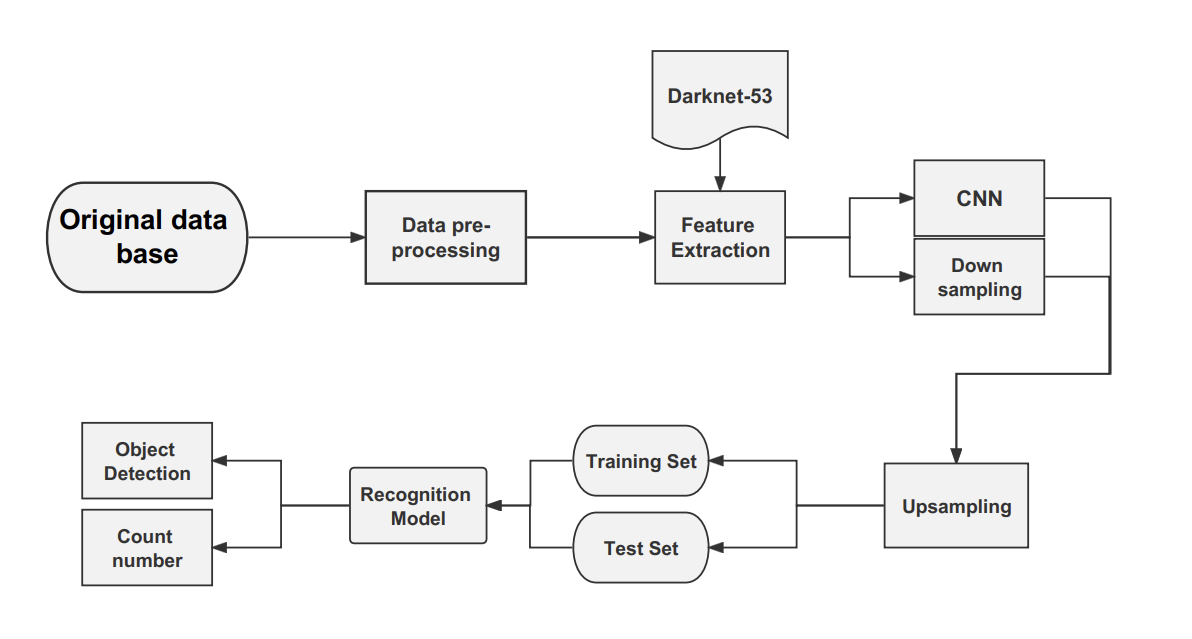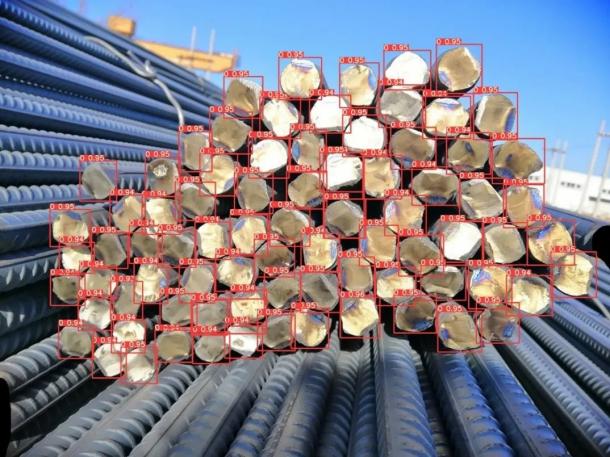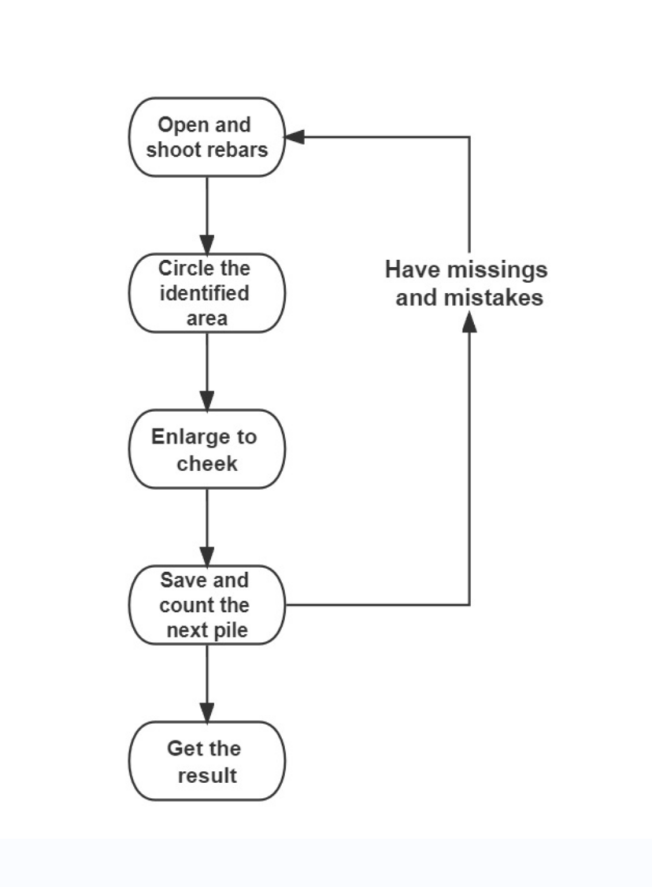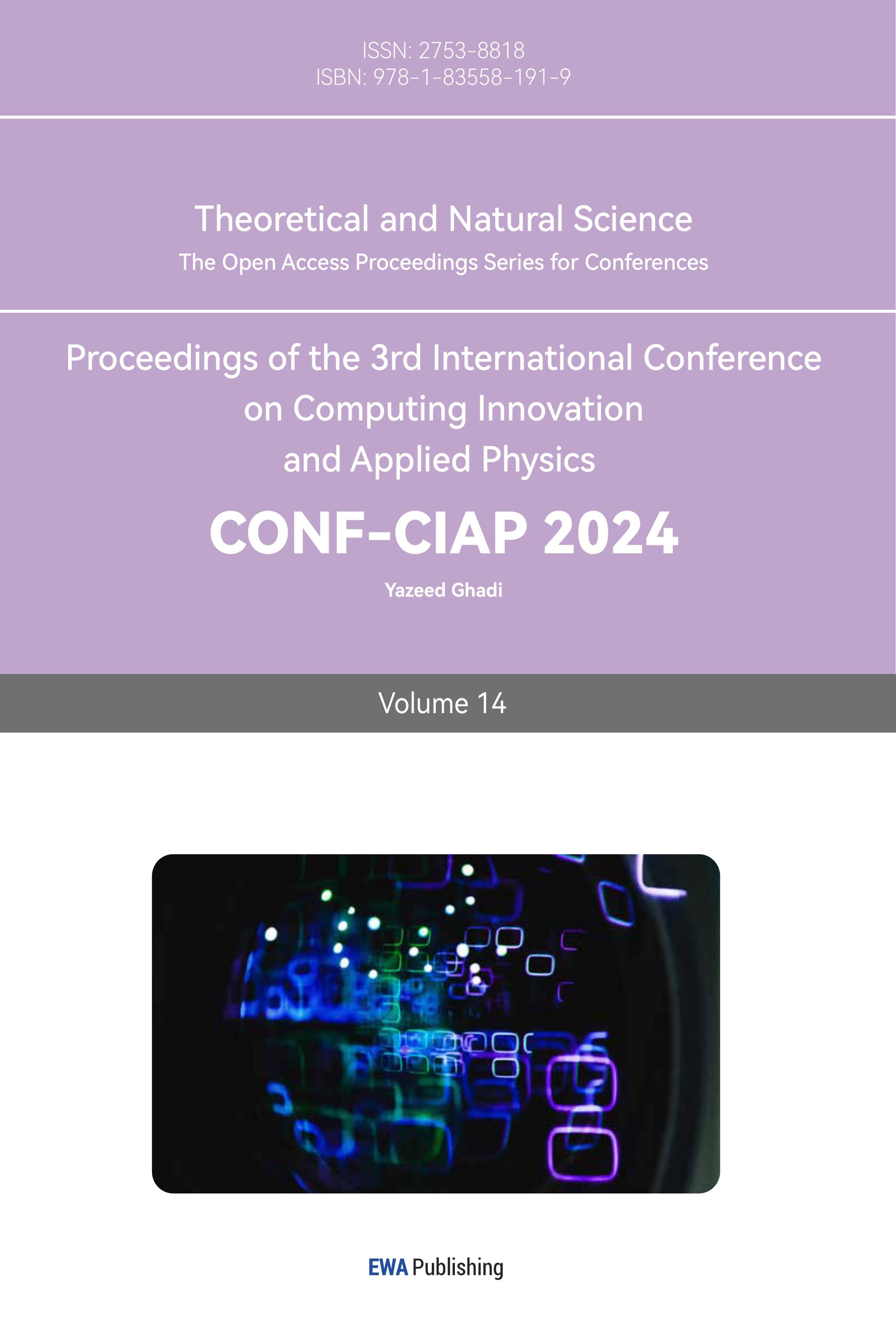1. Introduction
Artificial intelligence (AI) is a technology that studies how to simulate humans intelligence and get their independent consciousness to study, think, and deduce like a real human. Since the creation and training of AI began, human life has changed dramatically. It has been recognized as a hot developmental technology across all industries as its technology continues to be updated and iterated. The global annual revenue of the AI market has grown from $10.1 billion to $70.94 billion since 2018. However, in 2028, five years from now, the market will reach a staggering $997.77 billion [1].
The architecture, engineering, and construction industry (AEC) is worth $11.72 trillion globally but is considered the least digitized by far. The application of AI technology has helped the AEC industry enhance the process of construction intelligence. It has played a vital role in construction design and engineering management and has also brought billions of dollars of capacity value to the AEC industry [2]. A significant applied and developed area of AI is image recognition, which is the use of computers to process and analyse images [3]. This technology can recognize various targets and objects in varied patterns from their images. Currently, construction businesses have developed and implemented AI picture recognition as a mature technology in many different places [4].
The reinforcement quantity identification system is established to help construction workers count the number of reinforcements quickly and conveniently. The system is trained by the YOLOv3 convolutional neural network model and designed based on the pyTorch platform, where the user only needs to input the image of reinforcement and it will give the result of the counted number [5]. The intelligent identification and evaluation method on a fair-faced wall, which has typical damages, is another sample based on AI. It set the detection neural network based on YOLOv4 and established an image database with a deep learning neural network for the three typical damages of the fair-faced wall [6].
This paper aims to introduce and analyze the AI recognition technologies that has been applied in China's domestic construction industry, which focuses on the recognition of materials. Two different techniques are introduced independently, and the role of different learning models and neural networks in image recognition is explained in detail. Although these technologies can achieve remarkable results to a certain extent and promote the development of AI in the AEC industry, they only stay in engineering management and other aspects and do not improve construction efficiency or save labor costs in construction.
2. The reinforcement quantity identification system based on AI
Reinforcing steel, as a high-value consumable material, is a key focus of construction site management and needs to be counted and weighed on site to ensure compliance with national standards. The counting work of reinforcement is the last part of the production process, which mainly relies on people to get the exact number. The work of manual counting is repetitive and dull, with a high work load, and the accuracy cannot be guaranteed. The whole process consumes a lot of workers' time. Inefficient, inaccurate manual counting no longer meets the needs of reinforcement manufacturers for automated production and on-site material inspection. Therefore, with the development of machine learning, using AI to complete the work could be seen as a real-world application of it [7].
2.1. Target detection on reinforcement quantity
The principle of reinforcement quantity identification by AI is the machine vision method of detecting multiple objects, which can enhance efficiency and accuracy in work. By combining with the camera, the target detection algorithm can realize the automatic steel bar count and then modify a small amount of false detection so that the bar count task can be completed intelligently and efficiently. Object detection is a further process to classify the image that can not only recognize various categories of targets in the images but also find the locations of targets by using rectangular boxes to frame [8]. The results of target detection are shown in figure 1, where the target is detected and framed out with a bounding box, and a score situation where the target belongs to that classification is shown on top of the box.

Figure 1. Object detection process [9].
The recognition work for rebar pile images requires figuring out the localization and identification exactly. The basic process of the traditional target detection method is to first input the detected image, frame the required target in the image, and extract features from these frames. Then the feature extracted from the framed region is classified and judged to determine whether the object is the target or the background. Finally, the Non-Maximum Suppression (NMS) method is used to filter, remove duplicate frames, and find out the best detection location (figure 2) [8].

Figure 2. Traditional process of object detection.
2.2. The chosen algorithm: YOLOv3
However, the chosen algorithm for it is YOLOv3, which was designed through the PyTorch platform. YOLO series algorithm is currently the most used target detection algorithm, its biggest feature is that the detection speed is fast, and now the detection accuracy is also gradually improved, thus becoming one of the most popular target detection algorithms.
It uses a deeper convolutional neural network structure containing multiple convolutional and pooling layers [9]. It uses Darknet-53 as its backbone network, containing 53 convolutional layers for extracting image features. As shown in figure 3, this model is divided into three main parts, the data pre-processing phase, the feature extraction phase, and the model training phase [5]. At the beginning, the original dataset needs to be obtained for training. Before training the model using the YOLOv3 algorithm, the location of the sample needs to be manually marked for identification, informing the algorithm that this is the target sample to be identified. The Darknet-53 backbone extraction network is utilized to extract the dominating features while the model is being trained, and the associated CNN convolution and downsampling are subsequently carried out. Upsampling is ultimately employed to create the recognition model, which may then be used to frame the rebars in the photos and finish the counting process [5].

Figure 3. Design of reinforcement quantity identification model [5].
2.3. Operated procedure of reinforcement quantity identification
Based on the designed model, a construction technical firm from mainland China (Nanjing Yuyao Intelligent Technology Co., LTD) has developed the professional reinforcement recognition software system [10]. This AI reinforcement recognition model designed based on the YOLOv3 neural network obtained a high mean average precision (mAP) of 99.4% within a short period of time in the test [5]. Extracted frames in figure 4. indicates the recognition precision of a sample pile. It proves that it can efficiently and accurately accomplish the work of reinforcement quantity recognition.
The basic procedures for reinforcement quantity recognition are as follows, which are shown in figure 5 [10]. If there is any mistake or missing, operators only need to repeat the previous procedures to fix. At present, the entire designed model could fulfill users’ requirements to count the number of steel bars. Through deeper machine learning and an advanced neutral network, the AI reinforcement recognition system could be updated and iterated in the future. The small number of existing inaccurate counts and misjudgings will be avoided.

Figure 4. Extracted frames of recognized samples.

Figure 5. Procedures of reinforcement quantity recognition and recognized image.
3. The intelligent identification and evaluation method of typical damages of fair faced wall
The fair faced wall is a type of brick wall that does not require adding any decorative things like plaster and tiles after pointing and building. The bricks were exposed on the outer surface to show the natural texture of the wall. Compared with plastered walls, the appearance quality is higher while ensuring the same wall strength requirements [11]. In general, the fair-faced wall was used in old buildings as the dominant facade, but due to human factors and various environmental long-term effects, which will inevitably have different kinds and degrees of surface damage [12]. These damages result in a number of difficulties and negatively affect the ensuing repair and restoration operations.
Various AI-based image recognition models have been utilized in the construction sector to detect, analyze, and assess target samples using just one image since the invention and implementation of AI technology [3]. With the aid of these methods, it is feasible to a develop brand-new detection model for the easy and effective identification of fair-faced wall surface damages. Current visual inspection methods require the inspector to analyze, mark, and record the damaged areas on the wall and then assess the extent of the damage. This process is very tedious and boring, and long-term visual work can also cause some unavoidable misses and errors. However, the AI identification and evaluation model of smart inspection solves these problems.
3.1. Introduction of weathering, efflorescence and green plant coverage
The most common fair-faced wall damages are weathering, efflorescence, and green plant coverage [12]. Weathering is the process by which the fair-faced wall has been exposed to the natural environment for a long time, and contact with air, water, and all kinds of organisms has produced physical and chemical changes. Physical weathering is the result of natural factors such as wind, water, or temperature variations that cause the wall to receive a certain degree of wear and tear. Chemical weathering means the chemical substances in the atmosphere react with the wall’s bricks to make them corrode, dissolve, and change color. Finally, the pulverized layer is generated on the layer of the wall and causes the wall’s strength and stability to decrease [13].
Efflorescence refers to the produced phenomenon of soluble salts like calcium hydroxide on the fair-faced wall, and they always appear on the newly-built ones. They undergo water absorption, migration, and evaporation as ambient temperature and humidity change [14]. The physical and chemical changes that occur during this process can damage the surface of the fair-faced wall. In a natural situation, the excreta of green plant coverage like moss will lead to smudges on the surface of the wall. Compared to the complex physical and chemical reactions of weathering and efflorescence, the greenery covering the fair faced wall is the easiest to distinguish.
3.2. Intelligent detection model based on YOLO v4 and auto-evaluated method based on OpenCV
The detected work part of the fair-faced wall could use the target detection algorithm in AI, which has been explained in 2.1.1. There are two main algorithms in target detection at present, the R-CNN and YOLO series [11]. To fulfill the requirements of fair-faced detection work, YOLO v4 has been chosen as the algorithm to train an image database, design a detection model, and set up a deep learning neural network [15].
The image datasets were trained based on the respective typical visual features of the three fair-faced wall damages. First, weathering is represented in the image by the presence of falling, missing wall surfaces. When there are white crystals precipitated on the wall surface in the image, then it is efflorescence. Finally, it is obvious to analyze green plant coverage, which occurs on walls covered with plants such as moss. At the same time, the training also needs to use the actual images for different damages from historical buildings, so that the more training data is added, the more accuracy is enhanced for the designed model.
YOLO v4 was developed as the updated version of YOLO v3, which uses another backbone network called CSPDarknet 53. Compared with v3, the detection accuracy is increased by 10% while the detection speed stays at the same level. In addition, v4 does not need a higher computer configuration to run [16]. In order to reduce the error rate, image samples without any damage are also added to the model as training and test sets. Eventually, the designed detection model has mAP values of 91.2%, 92.6%, and 94.1%, respectively, for the three typical types of damage [11].
For the evaluation method, it was developed through OpenCV. It is a free computer vision library from Intel. It implements a variety of general image processing and computer vision methods using a set of C functions and a few C++ classes. [17]. In simple terms, OpenCV as a vision library can be used to calculate the pixel size of the region framed by the recognition model and the whole image. The resulting ratio of pixels of the region to the size of the whole image will be used as a criterion for assessing the degree of damage, with smaller values indicating less damage, and vice versa, larger values indicating more damage. Therefore, the three typical damage assessment indexes for fair faced walls were obtained. A pixel-level dimension calculation and damage evaluation system for fair-faced walls was formed [11].
3.3. Application in historical buildings in Shanghai
The fair-faced detection and evaluation technology has been applied to construction projects, especially in mainland China. Shanghai is a city with many historical buildings that were built with fair-faced walls. These buildings are important carriers of Shanghai’s history and culture. As the most important building facade form in Shanghai historical buildings, the fair-faced wall has been seriously damaged by various factors as time goes by. Therefore, the repair and renovation of them has become a significant part of the protection of Shanghai historical buildings. Shanghai Construction Group (SCG) developed the specialized technology and trained the AI data models [6]. Detectors only require a developed program to take images of the surface and get the type and evaluation of damage on the wall.
In the repair and renovation of the Jewish Refugee Memorial Hall, the former site of the First National Congress of the Communist Party of China Memorial Hall, Xinchang City, and other projects [6], this technology played a big role in helping the workers quickly determine the type of damage to the wall. It recognizes and assesses the three types of damages precisely and enhances efficiency and accuracy obviously, compared with the traditional recognized way. This technology does not damage the building itself; it only requires identification operations to complete the work. In the future, it will be applied to more fair-faced wall detection and repair work.
4. Conclusion
This paper is intended to introduce brief information and explain the principles of two developed AI recognition technologies: the reinforcement quantity recognition system and the identification and evaluation method of typical damages to a fair-faced wall.
Reinforcements, as vital construction materials, are counted by hand originally. Based on the most basic target detection method, an AI big data recognition neural network model is trained using the Yolo v3 algorithm for counting rebars. This technique greatly helps and improves the accuracy and efficiency of the reinforcement counting task, so that the workers do not need to perform tedious tasks. Similarly, a fair-faced wall, as a common form of architectural body in various regions of China, is subject to various kinds of damage over a long period of time in the natural environment. The detection and evaluation of these damages has become one of the most important tasks in the preservation of buildings. Traditionally, working with the human eye cannot be done accurately and quickly. The identification and evaluation methods for typical damages to a fair-faced wall are based on the Yolov4 algorithm and OpenCV's trained recognition and damage evaluation model, which is capable of accurately recognizing and determining the extent of damage. The main objects recognized by this method are weathering, efflorescence, and green plant coverage.
Although the technology developed based on AI is currently not able to perform construction work directly, it is already very sophisticated in areas such as recognition and determination. More and more construction companies are choosing to use AI technology and are putting it at the center of their development. In the future, AI technology will definitely have extraordinary changes and impacts on the construction industry.



